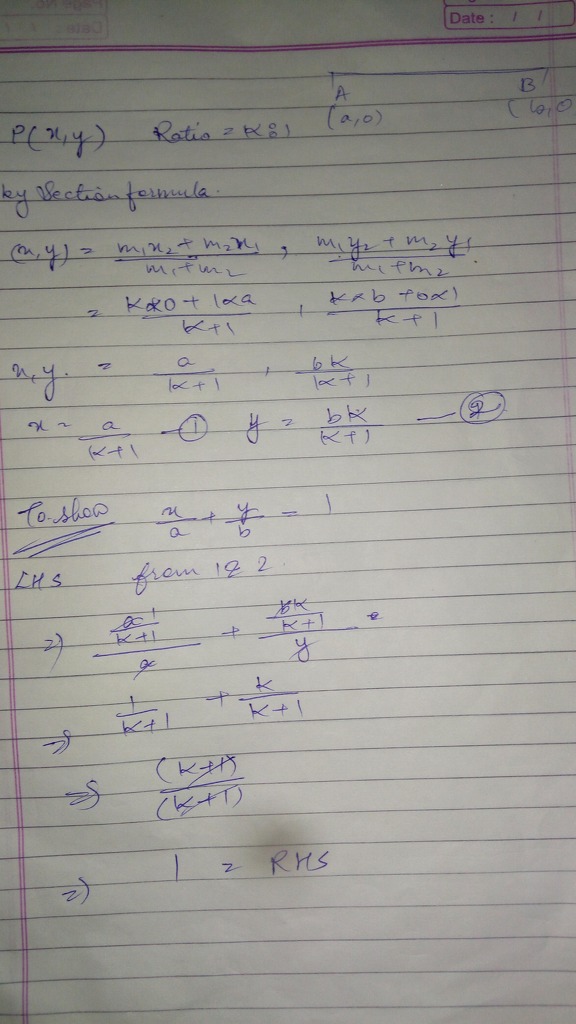if p(x,y ) is any point on the line segment joining the points A(a , 0) and B(0,b) then show that x/a + y/b = 1
Using area of triangle formula ,
1/2 {x1 (y2 - y3) + x2 ( y3 - y1) + x3 ( y1 - y2)}
1/2 { a ( y - b ) + x ( b - 0 ) + 0 ( 0 - y ) }
1/2 { ay - ab + xb }
Since all the points are in a straight line i.e. collinear they cannot form a triangle .
1/2 { ay - ab + xb } = 0
ay - ab + xb = 0
- ab + bx = - ay
- b ( a - x ) = -ay
a - x = - ay / - b
a - x / a = - y/-b
a/a - x/a = -y/-b
1 - x/a = -y / -b
1 = x/a + y/b
(or)
x/a + y/b = 1
Proved








